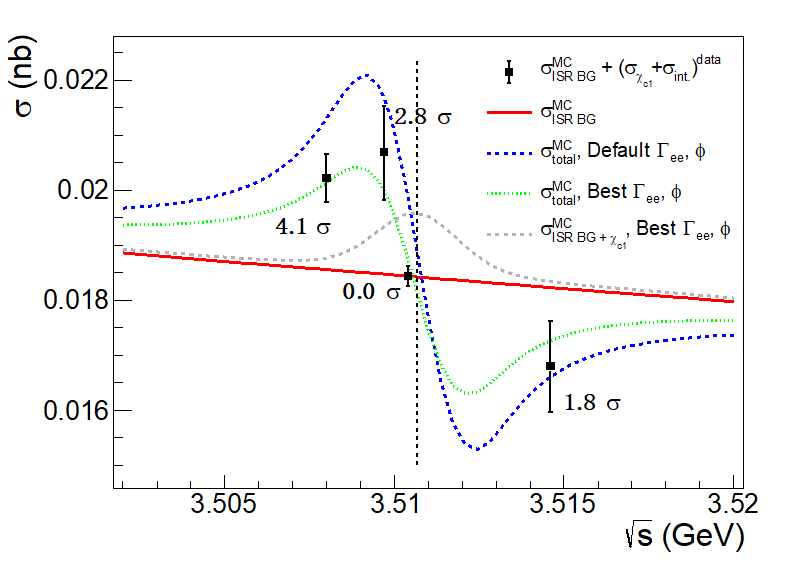

Particle production at e+e- colliders has been playing an outstanding role in the development of the Standard Model of particle physics and for our understanding of hadrons as bound objects of quarks and anti-quarks. At e+e- colliders, particles are typically created in the annihilation of a positron, e+, and an electron, e-, via the exchange of a virtual photon, thus have the same quantum numbers (JPC=1--) as the virtual photon, such as ρ and J/ψ. The χc1(1P) is however one of the P-wave charmonium triplets with the quantum numbers JPC=1++. It can only be produced via the exchange of two or more virtual photons, which makes reactions of this kind extremely rare and difficult to observe. Hadron production via two-photon annihilation was discussed theoretically already 40 years ago, but so far all experimental attempts to find them were unsuccessful.

Figure 1: The energy-dependent cross sections of e+e- → γJ/ψ →
The BESIII experiment carried out an energy scan of four data samples around the χc1(1P) mass, and searched for the reaction e+e- →χc1(1P). By exploring the quantum mechanical interference of the signal process e+e- →χc1(1P) →γJ/ψ →
The new BESIII result confirms the theoretical framework and, furthermore, demonstrates a new production mechanism for hadronic particles at e+e- colliders and hence opens a new avenue for detailed studies of hadrons at presently running and future e+e- colliders, such as super tau-charm factories. The method can for instance be applied to study the properties, such as electronic width and line shape, of other non-vector particles, which is especially important in the case of so-called exotic particles. It is worth pointing out that the exploitation of the interference effect will not only be useful for future precision studies of hadrons at e+e- colliders, but has also been suggested for instance for Higgs studies at the Large Hadron Collider (LHC) at CERN.
Further reading:
The PRL publication: https://link.aps.org/doi/10.1103/PhysRevLett.129.122001
The INSPIRE entry: https://inspirehep.net/literature/2058476